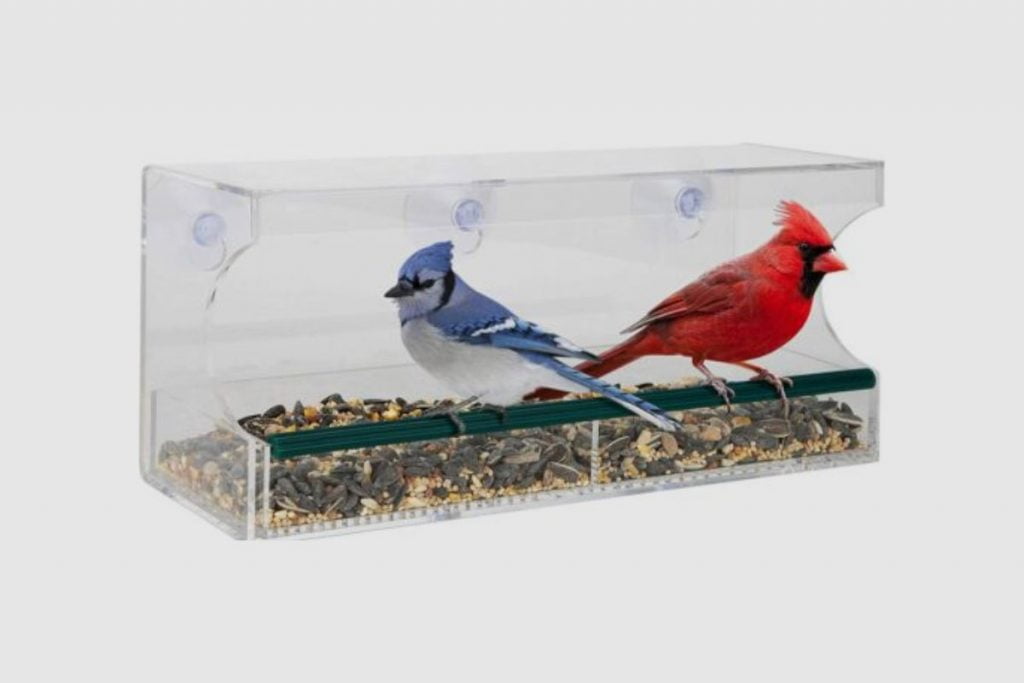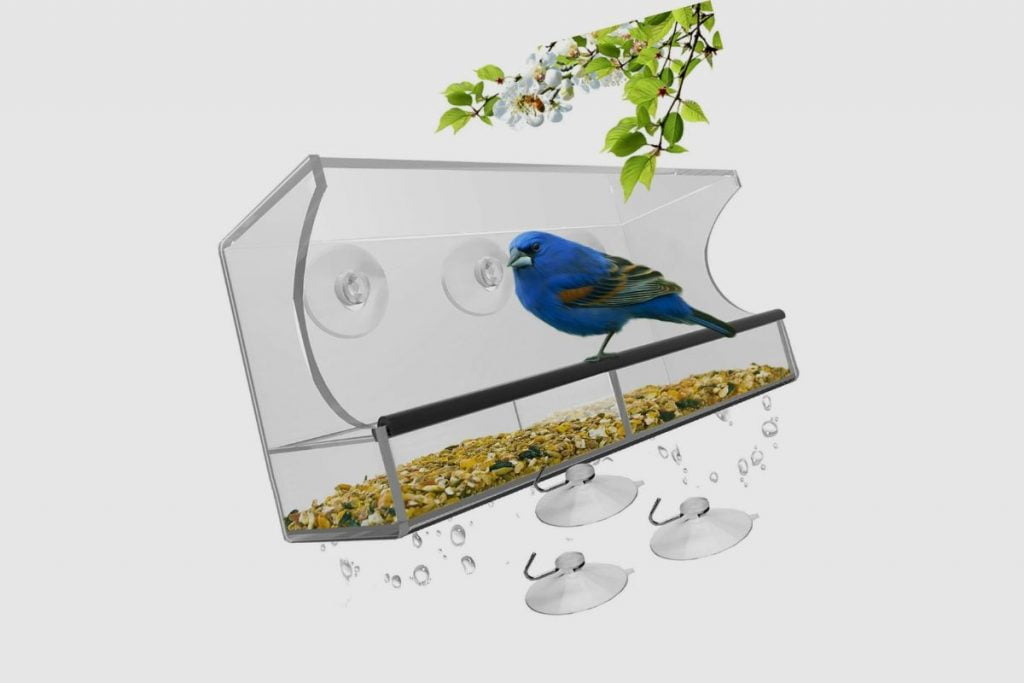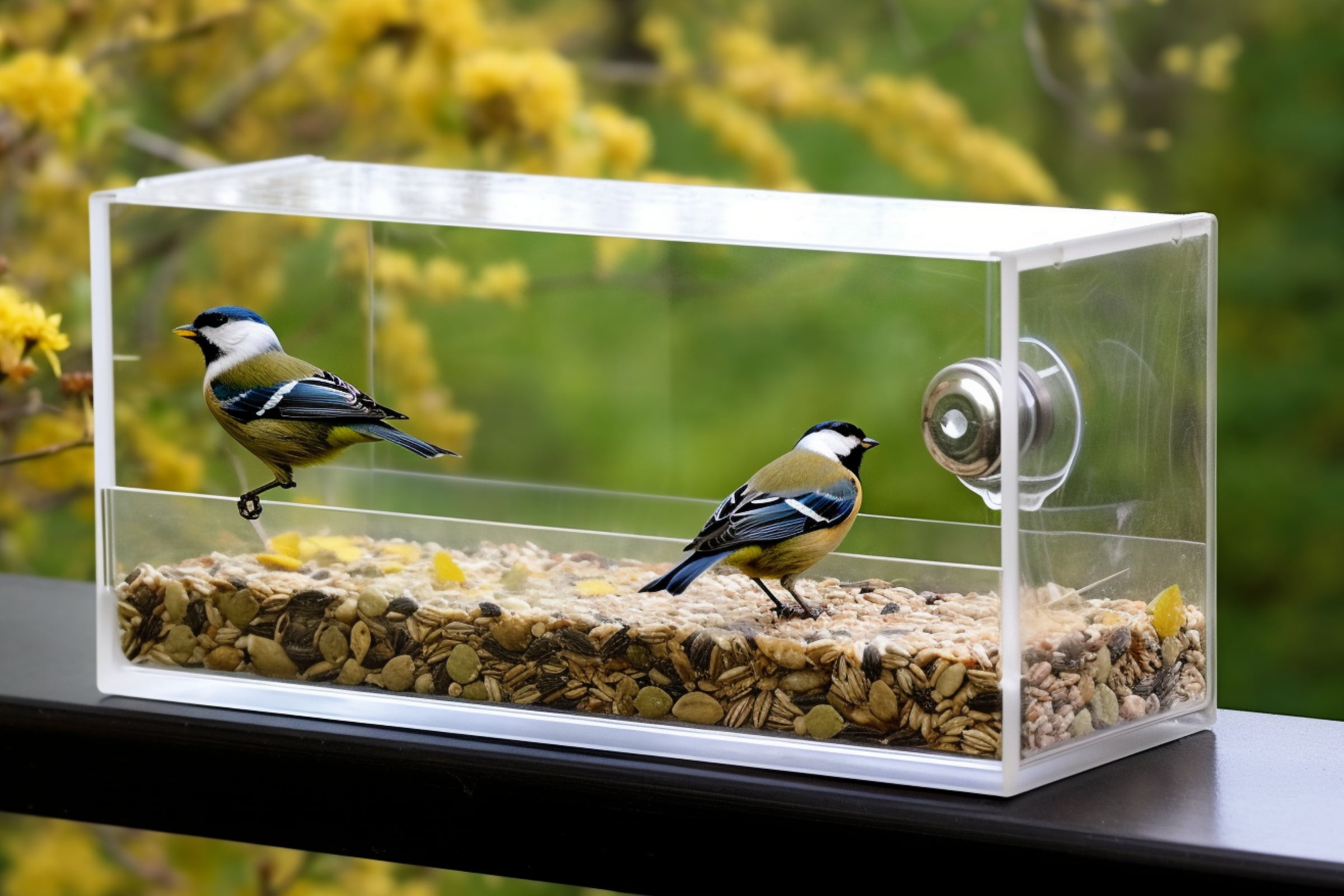Attracting birds to your window feeder can be a delightful and rewarding experience, but sometimes it can be frustrating when the birds don’t seem to be interested in your feeder.
There could be several reasons why birds are not coming to your window feeder. Some possible explanations include the following:
- The feeder is not placed in a location that is visible or easily accessible to birds.
- The feeder is not being stocked with food that birds find appealing or that is appropriate for the species you are trying to attract.
- The feeder is not being maintained or cleaned regularly, which could make it unappealing to birds or even harmful to their health.
- The feeder is being placed too close to a window, which could make birds feel vulnerable to predators.
- There may be other sources of food nearby, such as natural sources or feeders owned by neighbours, that are more appealing to the birds.
To attract birds to your window bird feeder, you may need to try different locations, types of food, and maintenance techniques.
You may also want to research the specific needs and preferences of the birds you are trying to attract, as different species have different feeding habits and dietary requirements.
Before delving into the topic further, there are two key points I would like to address quickly: bird feeding habits and preferences and the importance of window feeders’ location and placement.
- Understanding Bird Feeding Habits and Preferences
- The Importance of Location and Placement of Window Feeders
- How to Attract Birds to Your Window Feeder
- Conclusion
- FAQs – Why Won't Birds Come to My Window Feeder?
- Q: What are some common types of birds that might visit a window feeder?
- Q: What type of bird food should I provide in my window feeder?
- Q: How often should I clean my window bird feeder?
- Q: Why is the location of my window bird feeder important?
- Q: What can I do to attract more birds to my window feeder?
- Q: What are some popular types of window feeders?
- Q: What is the importance of bird seeds like black sunflower seeds in attracting birds?
- Q: How can I accommodate larger birds at my window feeder?
- Q: How can I make my window feeder safe for birds?
- Q: How can native plants and natural shelter benefit birds?
- Q: Why is water availability important for attracting birds?
- Q: How can I prevent squirrels from eating bird food in my feeder?
- Q: Why aren't birds visiting my window feeder?
- Q: What are some ways to ensure my feeder is visible to birds?
- Q: How can I keep bird food from spoiling in wet winter weather?
Related post to read: Will Birds Use A Window Feeder?

Understanding Bird Feeding Habits and Preferences
Every bird species are unique and have their own preferred way of eating. Some birds love to eat on the ground, while others prefer to eat on trees or use bird feeders. However, to attract a variety of birds, you need to understand their feeding habits and preferences. Let’s delve into some details:
- Bird Species and Their Preferences: Different species of birds have distinct dietary requirements and preferences. For instance, sparrows and finches are fond of seeds, whereas robins and blackbirds prefer fruits and insects. Understanding this aspect will help you provide the appropriate food to attract specific bird species.
- Feeder Types: The type of bird feeder you select can also impact which birds you attract. Tube feeders are great for small seed-eating birds like finches and chickadees. Platform feeders attract a variety of birds, such as cardinals and jays, and suet feeders are popular among woodpeckers and nuthatches.
- Feeding Locations: Birds also have preferences when it comes to where they eat. Ground-feeding birds like doves, juncos, and sparrows prefer food placed at ground level. Conversely, birds such as finches and chickadees like elevated feeders. Ensuring a safe and undisturbed feeding location is crucial to attract and retain birds.
- Quality of Bird Food: The quality and variety of bird food you offer significantly affect the diversity of birds you attract. Offering a variety of food, including seeds, nuts, suet, and fruit, will cater to a broad spectrum of bird species.
- Seasonal Feeding: Birds’ dietary needs can change with the seasons. For example, high-protein food like insects and suet are beneficial during the cold winter months, while fruits and seeds are popular in the summer. Adjusting your bird feeding strategy according to the season can help attract a diverse range of birds year-round.
- Water Availability: Birds need fresh water for drinking and bathing. Providing a bird bath or a water dish can attract more birds to your yard and encourage them to stay longer.
By paying attention to these key factors, you can create an inviting and nourishing environment for a variety of birds and enjoy the rewarding experience of bird-watching.

The Importance of Location and Placement of Window Feeders
The positioning of your window bird feeder plays a significant role in not only attracting birds to your feeder but also ensuring their safety. A properly placed window bird feeder can turn your window into a stage for bird-watching, providing hours of peaceful entertainment. Let’s further discuss the reasons behind the importance of location and placement:
Visibility for Birds: Birds need to be able to see your feeder to know it’s there. Therefore, placing your feeder in a location with a clear line of sight from surrounding trees or bushes can help attract birds. Furthermore, the feeder should be positioned so the birds have a clear view of the food inside it, encouraging them to land and eat.
Safe Distance from Predators: The safety of birds should be a top priority when choosing a location for your feeder. It’s important to place the feeder in a location where it’s not easy for cats or other predators to reach. A window that’s far from tree branches or other launch points can help keep feeding birds safe.
Human Viewing Considerations: One of the joys of having a window bird feeder is the opportunity to observe birds up close. Therefore, choose a window in a location where you spend a lot of time, such as a home office or kitchen, for maximum bird-watching enjoyment.
Right Height: The height of the feeder should be such that birds can easily access it. This is typically at the same level as the branches of nearby trees where birds perch.
Protection from Elements: The feeder should be placed in a location where it’s protected from harsh weather conditions like strong winds, heavy rain, or direct sunlight, which can spoil the food. A window that’s under an eave or porch can provide this protection.
Cleanliness: Window feeders can sometimes be messy, with birds dropping seed hulls or faeces. Therefore, consider placing the feeder where any mess won’t be a significant issue, like over a garden bed or an easy-to-clean area.

How to Attract Birds to Your Window Feeder
One of the first steps to attracting birds to your window feeder is to choose the right location. Place the feeder in a spot that is visible from several angles, and make sure it is away from potential predators such as cats and other animals.
You will also want to make sure that there is ample space for the birds to land and perch while they feed.
Next, you will want to use quality feed that is appropriate for the species you are trying to attract. Different species of birds have different dietary needs, so make sure you are using a food that matches their preferences. You should also avoid using too much sunflower seed, as it is not healthy or beneficial for most species of birds. Finally, be sure to clean and maintain your feeder regularly, as this will help keep it in good condition and make it more attractive to birds.
Thirdly, try to minimize the presence of predators near your feeder. This could include removing nearby cat perches or bird baths that may be within a predator’s reach.
You may also want to consider installing motion-activated lights or sound alarms, which can scare off potential predators, or even putting up an animal-proof fence around your property if needed.
Finally, making your window feeder more inviting by adding birdhouses or perches near it can make it more attractive for birds. Adding extra sources of food, such as nectar feeders or fruit trees, can also encourage more birds to visit your yard.
Conclusion
Attracting birds to a window feeder doesn’t have to be a challenge. By addressing issues such as placement, quality of food, predator control, and making it inviting, you can help ensure that birds come to visit your window feeder regularly!
At the end of the day, it all comes down to understanding the needs and preferences of the birds you are trying to attract and making sure that your window bird feeder meets their feeding needs.
FAQs – Why Won’t Birds Come to My Window Feeder?
Q: What are some common types of birds that might visit a window feeder?
A: Common feeder birds that might visit include sparrows, finches, cardinals, chickadees, jays, woodpeckers, and much more other bird species. Also, hummingbirds may be drawn to window bird feeders, especially if they are hummingbird window feeders. However, this will vary based on whether hummingbirds are indigenous to your area or country.
Q: What type of bird food should I provide in my window feeder?
A: Different bird species have different preferences. You can offer a variety of bird food, including black oil sunflower seeds, sunflower hearts, mixed bird seed, suet blocks, suet nuggets, and fat balls to attract a wider variety of birds.
Q: How often should I clean my window bird feeder?
A: To maintain a healthy feeding environment for the birds, it’s recommended to clean your window bird feeder on a regular basis, ideally once a week.
Q: Why is the location of my window bird feeder important?
A: The location of your feeder affects the birds’ safety, visibility of the feeder to birds, and your viewing pleasure. A suitable location is visible to birds, safe from predators, protected from harsh elements, and easy for you to watch.
Q: What can I do to attract more birds to my window feeder?
A: Ensuring a variety of food sources, providing fresh water, regularly cleaning your feeder, and placing it in a location safe from predators can all increase bird activity at your feeder.
Q: What are some popular types of window feeders?
A: Popular types of window feeders include suction cup feeders, solarium feeders, and traditional bird feeders that hang from a window with suction cups.
Q: What is the importance of bird seeds like black sunflower seeds in attracting birds?
A: Black sunflower seeds are a favourite food of many backyard birds. They are high in fat, providing energy to birds, and their thin shells are easy for most birds to crack open.
Q: How can I accommodate larger birds at my window feeder?
A: Larger birds may need a sturdy feeder with larger perches or a platform. Also, placing the feeder near a bird table can provide a landing spot for larger birds.
Q: How can I make my window feeder safe for birds?
A: To make your window feeder safe, ensure it’s placed at a safe distance from potential predator hiding spots. Clean windows can also prevent bird collisions.
Q: How can native plants and natural shelter benefit birds?
A: Native plants can provide natural food sources and shelter for birds. They can also attract insect-eating birds as they host a variety of insects.
Q: Why is water availability important for attracting birds?
A: Birds need fresh water for drinking and bathing. Providing a water feature or dish can attract more birds to your yard and encourage them to stay longer.
Q: How can I prevent squirrels from eating bird food in my feeder?
A: Using squirrel-proof bird feeders or feeders with weight-sensitive perches can help deter squirrels. Also, capsaicin-coated seeds, which are spicy but safe and unnoticeable to birds, can deter mammals like squirrels.
Q: Why aren’t birds visiting my window feeder?
A: There could be multiple reasons – the feeder might not be visible or easily accessible to birds, the food might not be appealing to the birds you’re trying to attract, or the feeder might not be clean.
Q: What are some ways to ensure my feeder is visible to birds?
A: Place your feeder in a location with a clear line of sight from nearby trees or bushes. Also, keep the feeder clean and well-stocked to make it more noticeable to passing birds.
Q: How can I keep bird food from spoiling in wet winter weather?
A: Consider offering foods that are less likely to spoil in wet weather, such as suet or shelled sunflower seeds.

I’ve never bought one for my own house. But worry they would see me inside through the feeder, as I walked through house, etc. And be scared off.
I completely understand your concerns about potentially scaring off the hummingbirds with a window feeder. It’s a joy to see these tiny creatures up close, and we certainly wouldn’t want to disrupt their feeding.
However, from my experience, hummingbirds are surprisingly bold and can get used to human activity. Initially, they might be wary, but with time, they could learn to trust that the movements inside your home are harmless. They are highly intelligent and adaptive creatures.
If you decide to try a window feeder, you could start by moving slowly and calmly when you’re near the window, just until they get used to your presence. And remember, the beauty of the window feeder is that it allows you a glimpse into their world from your very own comfort.
In any case, the decision is entirely yours. But remember, with a little patience; I believe it’s an experience that’s truly worth it.